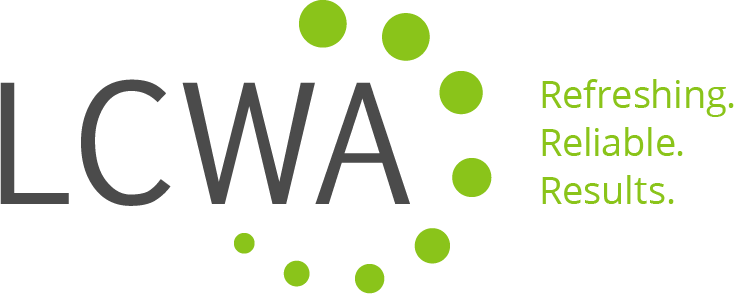May 16, 2019
 How many emails do you get in a day? If you’re anywhere close to the average American professional, the number typically hovers around 100-150.
How many emails do you get in a day? If you’re anywhere close to the average American professional, the number typically hovers around 100-150.When it comes to launching an enewsletter or “eblast” campaign, it’s important to keep this reality in mind. According to Constant Contact, the ideal open rate for enewsletters is around 15%, and for many industries such as tourism or hospitality, the number is closer to 10-11%. While this may seem low, remember that it’s all a numbers game. For a brand that’s looking to reinforce key messaging, raise awareness or promote a product, this 10-15% can make an impact.
At LCWA, we recommend, design and distribute e-newsletters for a variety of clients, from healthcare associations to office product manufacturers. Because email distribution systems provide valuable information such as open and click-through rates, each email is an opportunity to hone our approach and improve results. That being said, we’ve developed some tried-and-true tactics to ensure each communication captures readers’ attention and spurs action.
Go Niche
Bigger isn’t always better. While it may seem counterintuitive to limit the reach of your e-blast to a select portion of your key audiences, content that is tailored to a particular audience almost always performs better than general eblasts with broad messaging. Remember, it’s engagement rates that indicate performance, not number of recipients.
Make sure your messages are drafted with a particular audience in mind (for instance, business owners, parents, association members, etc.) and only include information that is relevant to them. You may have lots of great points to make, but unless they pertain to that audience, you run the risk of losing the attention of readers, or worse – have them click the “unsubscribe” button. Don’t forget to apply this advice to your subject lines as well. The more personal you can make your subject line, the better the chances of readers opening the email.
Keep It Simple – And Scrollable
Most readers will only spend a few seconds browsing your email, so text-heavy and graphic-laden designs can distract from your messages – and no one wants to read an essay. My advice is to use short, condensed phrases and bullet points. When it doubt, edit!
When it comes to design, consider that most people will be viewing your email either in a desktop window or on their mobile device. Opt for a more vertical layout – with phrases and elements listed one after another, rather than in a row. Presenting one bit of key information at a time is easier for readers to digest, and also encourages them to scroll for more. Use elements like colors and bold-faced type to draw focus on particular messages or actions you want the reader to take.
Create a Strong Call-to-Action
 Be sure your readers know from the moment they open your email what action you want them to take. Whether it’s to “Learn More,” “Donate,” “Apply” or “Buy Now,” clear call-to-actions lead to greater click-through rates.
Be sure your readers know from the moment they open your email what action you want them to take. Whether it’s to “Learn More,” “Donate,” “Apply” or “Buy Now,” clear call-to-actions lead to greater click-through rates.Whatever your call-to-action is, use strong action verbs, and design the text button large enough so that there’s no way readers can miss it. Typically, I design call-to-action buttons with a bold, contrasting background color, and leave plenty of space surrounding it so that it stands out from other content.
In addition, consider embedding links in headlines, logos and product images, as well as textual links in the body of your copy. The more opportunities you provide, the more likely they’ll click on one of them.
Don’t Go Overboard
Some businesses or organizations may be able to get away with more frequent – or even daily – eblasts, particularly if they have a passionate audience or are launching a campaign. However, the last thing you want to do is saturate your audience to the point that they unsubscribe.
There’s no hard-and-fast rule for how often you should email a particular audience. As long as the content is fresh and relevant, it’s valuable. Go with your gut – if your call-to-actions and messages seem repetitive or stale to you, it is likely that your audience feels the same. One helpful metric is to track unsubscribe rates, which tend to level off after a few initial emails. If you notice a significant uptick, it may be time to scale back.
Subscribe
Chances are, you have a handful of enewsletters in your inbox right now. Open them, read them, study them. Take note of what works and w hat doesn’t, and apply to your own campaigns.
